Introduction to Generative AI Chapter Notes | Artificial Intelligence (AI) for Class 9 PDF Download
Introduction to Generative AI
Generative AI involves algorithms that create new data resembling human-generated content, such as text, images, audio, and videos. This technology is trained on existing data and has applications in natural language processing, computer vision, and speech synthesis.
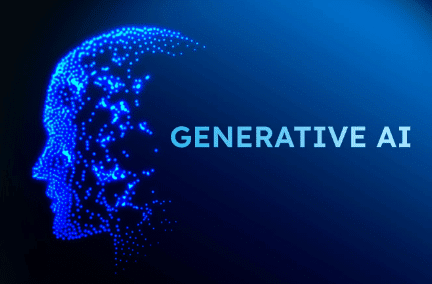
Generative AI Timeline
Generative AI has progressed significantly over the years due to advancements in neural networks and deep learning. From early generative models to breakthroughs in natural language processing and image generation, its development has been a continuous journey of innovation. Today, it encompasses various applications like text generation, image synthesis, and creative content creation.
Comparison: Generative AI vs Conventional AI
Generative AI is designed to create new and unique content, while conventional AI focuses on analyzing and processing existing data. Here are the key differences:
- Goal: Generative AI aims to produce new content, whereas conventional AI categorizes and processes data.
- Training: Generative AI models train on extensive sample libraries to identify patterns, while conventional AI uses simpler algorithms.
- Output: Generative AI delivers innovative and unexpected results, while conventional AI provides predictable outputs.
- Applications: Generative AI is used in art, music, and gaming, while conventional AI finds applications in healthcare and language processing.
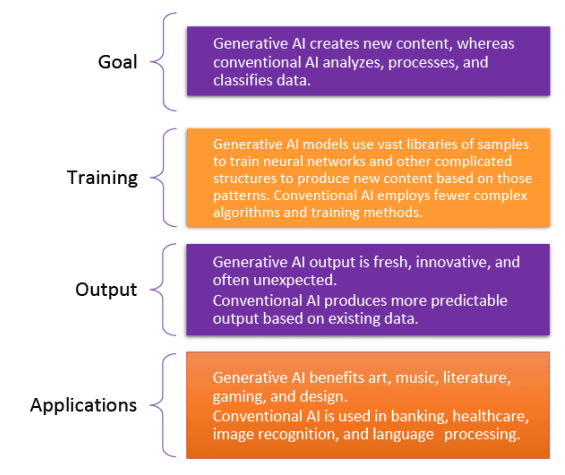
Types of Generative
AI Generative AI comes in a variety of forms, each with unique advantages and uses. Some of the most typical varieties are listed below:GANs (Generative Adversarial Networks)
- GANs are a type of neural network that work together to create new data.
- They consist of two networks: the Generator Network and the Discriminator Network.
- The generator produces data, while the discriminator evaluates it and provides feedback.
- The process continues until the generator produces data that closely resembles real data.
- Common applications include generating realistic images, transforming images from day to night, creating images from textual descriptions, and producing realistic videos.
VAEs (Variational Autoencoders)
- VAEs are another category of generative models that generate new data by learning the distribution of existing data and sampling from it.
- They can create new images similar to a given dataset, reconstruct images, assist in writing drafts, generate new sounds, and compose music.
RNNs (Recurrent Neural Networks)
- RNNs are a specialized type of neural network designed to process sequential data, such as text or music.
- They analyze past inputs to predict future ones.
- Applications include generating text in a specific author’s style, predicting the next word or character in a sequence, and other sequence-based tasks.
Autoencoders
- Autoencoders are neural networks that learn how to compress and reconstruct data.
- They compress data into a smaller representation and later decompress it back to its original form.
- They are used in image denoising, picture compression, and other applications.
- Examples include generating artistic images and aiding in drug discovery, producing highly realistic samples.
Real-World Applications of Generative AI
Generative AI is being applied in various fields, showcasing its potential to create and innovate across different domains. Here are some detailed examples:
- Art: Generative AI is utilized to produce original artworks by analyzing patterns and styles from existing pieces. For instance, The Next Rembrandt project employed data analysis and 3D printing to create a new painting that mimics the style of the famous artist Rembrandt.
- Music: AI composers like AIVA are capable of generating new music across various genres, either by composing original pieces or remixing existing tracks. This technology is pushing the boundaries of music creation and personalization.
- Language: Generative AI is revolutionizing language use through chatbots and natural language generation systems. These tools can engage in conversations with users or produce written content, making interactions more seamless and efficient. For example, ChatGPT has gained popularity for its ability to generate human-like text responses.
Advantages of Generative AI
Generative AI presents numerous advantages, including:- Enhanced Creativity: It stimulates creative processes by offering innovative ideas and solutions.
- Improved Efficiency: Automating content generation speeds up the creation process, saving time and resources.
- Personalization: AI can tailor content to individual preferences, enhancing user experiences.
- Exploration: It enables the exploration of new concepts and styles that may not have been considered otherwise.
- Accessibility: Generative AI tools are becoming more accessible, allowing a wider range of users to benefit from them.
- Scalability: Businesses can scale their content creation efforts more easily with the help of AI.
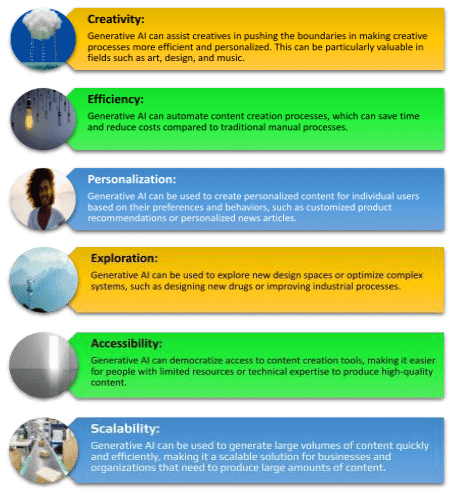 By harnessing these benefits, organizations can enhance their content creation processes and deliver improved experiences to their audiences.
By harnessing these benefits, organizations can enhance their content creation processes and deliver improved experiences to their audiences.
Limitations of Using Generative AI
- Data Bias: If generative AI is trained on incomplete or biased data, its output may also be flawed or biased. This can result in inaccurate or problematic outcomes, particularly in applications such as natural language processing and facial recognition.
- Uncertainty: Generative AI often produces unexpected or unpredictable results. While this can sometimes be beneficial, it also presents a challenge as the outputs may not always be reliable.
- Computational Demands: Training and generating output with generative AI requires substantial computational power. This process can be costly and time-intensive, making it a significant challenge in AI development.
Hands-on Activity: GAN Paint
GAN Paint is a tool that allows users to modify images by directly activating or deactivating specific neurons in a deep neural network trained for image generation.
- The left buttons in GAN Paint correspond to groups of 20 neurons that represent specific features like "door," "brick," etc.
- By switching these neurons on or off, users can see how the network learns to represent different elements in an image, such as trees, doorways, and roofs.
- This direct manipulation of neurons provides insight into the network's internal model of the visual world.
- To start using GAN Paint, select a base image from the website's library. Then, use the brush tool to add objects and textures to the image. As you paint, the GAN network will adapt and generate more realistic images based on your modifications.
- Users are encouraged to experiment with different combinations and see what unique images they can create.
Generative AI tools
Generative AI tools are software applications that leverage artificial intelligence algorithms to create new content, such as images, music, text, and more. These tools use generative models, which learn patterns from existing data and generate new samples that resemble the training data. Here are some popular generative AI tools:- Artbreeder: Artbreeder is a web-based platform that allows users to create and modify images by blending different generative models. Users can combine various GAN models to produce unique and visually appealing images.
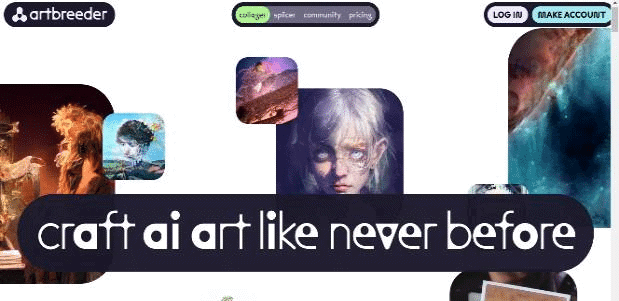
- Runway ML: Runway ML is a versatile platform for building, training, and deploying generative models. It offers an intuitive interface for creating various types of generative models, including GANs, VAEs, and image classifiers. Users can experiment with different models and generate content easily.
- DALL-E: DALL-E is an AI model developed by OpenAI that generates images from textual descriptions. Users can input descriptive text prompts, and DALL-E will create corresponding images, showcasing its understanding of language and visual concepts.
- DeepArt: DeepArt is an AI-powered tool that transforms photos into artwork by applying different artistic styles. Users can upload their images and choose from various styles to create stunning art pieces.
- NVIDIA GauGAN: GauGAN is a tool by NVIDIA that allows users to create photorealistic images from simple sketches. Users can draw basic shapes and outlines, and GauGAN will generate detailed images based on the input, showcasing the power of generative adversarial networks.
- MusicGAN: MusicGAN is a generative model that creates music compositions based on learned patterns from existing music data. Users can experiment with different styles and genres to generate unique musical pieces.
Gemini
Gemini is another AI tool similar to ChatGPT. It can help with various tasks like writing, summarizing, and answering questions. You can check it out at this link .
When I asked Gemini to introduce itself, it gave a detailed response about its capabilities and features. Here’s what it said:
Chit-Chat with ChatGPT & Gemini
Sign up and login into both ChatGPT and Gemini.
Chat with ChatGPT and ask it to write a paragraph on “How it Works? - ChatGPT”.
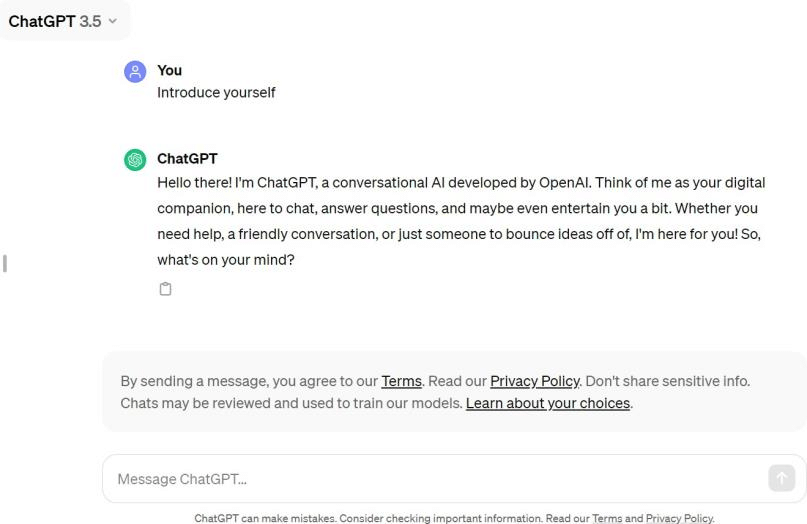
Similarly, chat with Gemini and ask it to write a paragraph on “How it Works? - Gemini”.
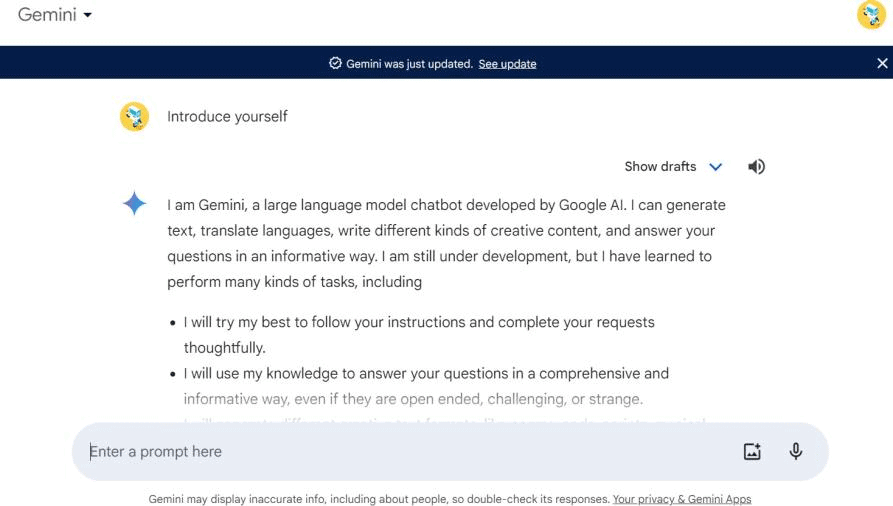
Here are 6 prompts you can try on both ChatGPT and Gemini:
- Write a summary of the history of the internet.
- Explain how to code a simple website.
- Write a blog post about the latest trends in artificial intelligence.
- Create a presentation about the benefits of cloud computing.
- Write a research paper about the future of technology.
- Design an app that solves a real-world problem.
Document the findings from the above activity on ChatGPT vs Gemini vs Copilot based on the following parameters:
- Human-Like Response
- Training Dataset and Underlying Technology
- Authenticity of Response
- Access to the Internet
- User Friendliness and Interface
- Text Processing: Summarization, Paragraph Writing, Etc.
- Charges and Price
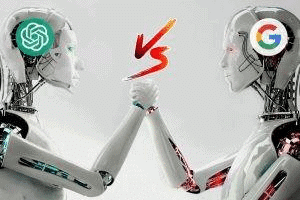
How to Use Generative AI Tools in Real-world Scenarios
The table displays popular Generative AI tools that can be employed in various fields.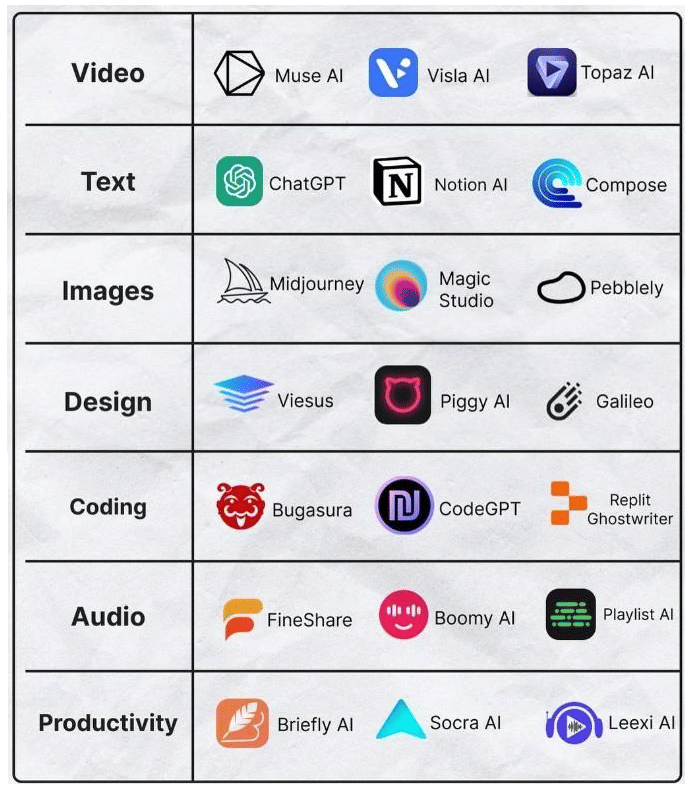
More Tools for Generative AI
Generative AI is a powerful technology that can create new content, and there are various tools available to harness its capabilities. Here are some additional tools across different categories:
Generative AI Image Generation Tools
- DALL-E: Developed by OpenAI, DALL-E is an advanced image generation model that creates images from textual descriptions. It can generate highly detailed and imaginative images based on user prompts.
- Runway ML: Runway ML offers a suite of AI tools for creators, including image and video generation. Their platform allows users to experiment with various generative models and integrate them into their creative workflows.
- Artbreeder: Artbreeder is a collaborative platform that allows users to create and modify images using AI. Users can blend images, adjust parameters, and explore a vast library of user-generated content to create unique artworks.
Generative AI Text Generation Tools
- Grammarly: While primarily known for grammar checking, Grammarly's AI-powered writing assistant can help users generate content suggestions and improve their writing style.
- Copy.ai: Copy.ai is an AI writing tool that helps users generate marketing copy, blog posts, and other written content. It offers various templates and prompts to kickstart the writing process.
- Writesonic: Writesonic is an AI writing platform that assists users in creating high-quality content quickly. It offers features like content ideas, article generation, and product descriptions.
Generative AI Audio Generation Tools
- Descript: Descript is an audio and video editing tool that uses AI to transcribe and edit audio content. It allows users to generate audio by typing text, making it useful for podcasting and voiceover work.
- AIVA: AIVA (Artificial Intelligence Virtual Artist) is an AI composer that generates music based on user preferences. It can create unique soundtracks for various applications, including videos and games.
- Amper Music: Amper Music is an AI music composition platform that enables users to create custom music tracks for videos, games, and other projects. Users can specify parameters like mood, genre, and duration to generate unique compositions.
These tools showcase the diverse applications of Generative AI across different media types, empowering creators to explore new possibilities and enhance their workflows. As the technology continues to evolve, we can expect even more innovative tools and applications to emerge in the Generative AI space.
Ethical Considerations of Using Generative AI
Generative AI, while offering numerous benefits, also raises important ethical considerations that need to be addressed. Here are some key ethical concerns associated with the use of Generative AI:
- Bias: Generative AI has the potential to replicate and amplify existing biases present in the training data. If the data used to train the model contains biases related to race, gender, or other factors, the generated content may reflect and reinforce these biases. This is particularly concerning in high-stakes applications such as hiring, loan approvals, and criminal justice, where biased outcomes can have serious consequences.
- Misinformation: Generative AI can be misused to create fake news, deepfakes, and other forms of misinformation. These generated content can manipulate public opinion and undermine trust in institutions. The ability to produce realistic but false information poses significant risks to democracy and the integrity of information.
- Privacy: There are concerns about the potential for Generative AI to generate sensitive personal information, such as credit card numbers, social security numbers, and medical records. If such information is generated or inferred, it could be used for malicious purposes, leading to privacy violations and identity theft.
- Intellectual Property: Generative AI raises questions about intellectual property rights and ownership of generated content. If an AI model creates a piece of art, music, or writing, who owns the rights to that creation? Clear guidelines are needed to address ownership and attribution issues associated with generative content.
- Accountability :Determining accountability for the output generated by AI models can be challenging. If a generated piece of content causes harm or spreads false information, it may be unclear who is responsible—the developer of the AI model, the user, or the organization deploying the AI. Establishing accountability frameworks is crucial to address potential harm caused by generative AI.
In conclusion, while Generative AI holds great promise for innovation and creativity, it is essential to navigate these ethical considerations carefully. Developing robust guidelines, ensuring diversity in training data, prioritizing user privacy, and engaging in public discussions about the implications of generative AI are crucial steps toward responsible use of this technology.
The Potential Negative Impact on Society
- Generative AI can be used to create fake news or deepfakes that can spread misinformation and manipulate public opinion.
- Lead to job displacement for humans who previously performed these tasks.
- Generative AI has the potential to generate sensitive personal information, such as social security numbers or medical records, which could be used for malicious purposes.
Responsible Use of Generative AI
- Ensuring that the training data used are diverse and representative.
- The outputs are scrutinized for bias and misinformation.
- Prioritizing user privacy and consent,
- Having clear guidelines around ownership and attribution of generative content.
- Engaging in public discussions around the social and ethical implications of this technology to ensure that it is developed and used in ways that are beneficial to society.
- In short, responsible use of Generative AI is essential for ensuring that this technology is developed and used in ways that benefit society!
- By emphasizing ethics, creating trust, limiting negative repercussions, defining legislation, and encouraging innovation, we may maximize Generative AI’s potential to improve society!
|
32 videos|57 docs
|
FAQs on Introduction to Generative AI Chapter Notes - Artificial Intelligence (AI) for Class 9
| 1. What is Generative AI and how does it differ from Conventional AI? |  |
| 2. What are some common types of Generative AI? |  |
| 3. What are the real-world applications of Generative AI? |  |
| 4. What are some limitations of using Generative AI? |  |
| 5. What ethical considerations should be taken into account when using Generative AI? |  |
















